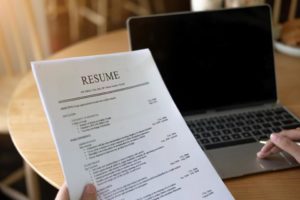
Gaps in employment history can be one of the most challenging issues a job seeker faces. According to recruiter Bronwen Hann (5 Tips for How to Explain Gaps in Your Employment History), an unexplained gap in employment history can sometimes be a deal-breaker for potential employers, and often it’s more about what your resume or social media profile implies than what it says explicitly. Unexplained gaps in your work history can give employers the wrong impression and perhaps suggest that you lack ambition, were terminated from your previous job or are having a difficult time landing a position. Hann says that acknowledging and explaining gaps in your employment history puts you in charge of your career’s narrative instead of letting a hiring manager’s bias determine your future.
When it comes to explaining an employment gap, it’s important to be ready to address the questions or concerns of recruiters and hiring managers. Instead of getting caught in a bind of stress and fumbling your words, TopResume staff writer Carson Kohler (6 Simple Tips to Master Your Employment Gap Explanation) recommends being prepared to talk about your employment gap comfortably and confidently. Tips for explaining employment gaps include:
Be Honest
Whatever the reason for your time away from work, honesty is always the best policy, says writer Elizabeth Alterman (How to Explain the Gap in Your Resume With Ease). During the entire job search process, Alterman advises maintaining and demonstrating your integrity. Some hiring managers may not like your explanation, but many others will appreciate your honesty and be willing to overlook a gap if you have the requisite skills and experience for the job.
Be Confident
You need to project confidence in yourself when discussing your employment gap. If you show uncertainty or discomfort, the hiring manager might end up feeling unsure or uncomfortable as well. While the thought of discussing how you came to be unemployed, especially if you were fired or laid off, might make you uneasy, don’t panic. Resume gaps are not as uncommon as job seekers think, so it’s important to remember that your interviewer has probably heard many explanations similar to yours.
Be Positive
Keep your employment gap explanation positive. If the gap is a result of being fired or laid off, don’t badmouth your previous employer. If you quit a job before finding a new one, give a simple explanation rather than a long story full of excuses. The Wall Street Journal’s “Work & Family” Columnist Sue Shellenbarger (You Can Overcome a Long Gap in Your Résumé) suggests that you keep the focus when interviewing on what you hope to contribute in the future and project high energy and interest to ease any doubts about your readiness.
Be Clear and Concise
There’s no reason to dwell on your employment gap for more than a few minutes. Offer an explanation and then emphasize that you’re highly motivated to continue your career. Try to keep the focus on your experience and accomplishments.
Talk About New Skills and Valuable Experiences
Emphasize any skill building activities you undertook during your employment gap, including certifications, courses, workshops, volunteering or major personal projects. Show how your experiences helped improve your soft skills, such as communication, adaptability and problem solving.
Address Your Employment Gap on Your Resume and LinkedIn Profile
It’s important to acknowledge gaps in employment history up front, in a resume or on your LinkedIn profile, so that potential employers don’t eliminate you before the interview. Write a brief explanation of your employment gap. If you were let go from your previous job, indicate the reason, such as restructuring or downsizing. If you left a job voluntarily, give an explanation, such as time off to travel or to take care of a family situation. If there’s a purpose and intention to the gap, it’s much more acceptable to hiring managers than an unexplained gap that makes it look like you didn’t do anything in the interim.
The results of a recent study indicate that it’s better to explain an employment gap than to ignore it and hope potential employers don’t notice. The study showed that job applicants who gave a reason for their employment gap received close to 60% more interviews than those who did not, and among applicants who provided a reason for their work gap, those who said they received additional training or education ended up with the highest callback rate.
Given the low unemployment rate, recruiters and hiring managers are working overtime to find qualified candidates. SHRM Talent Acquisition Manager Roy Maurer (How to Evaluate Resume Employment Gaps) says that considering all candidates is a business imperative in the current employment environment. He points out that employers who are competing for talent must be willing to look at candidates who haven’t necessarily had the smoothest progression in their work experience. If you are feeling uncomfortable and trying to hide an employment gap, this might be the best time to address the gap with potential employers honestly and confidently.
